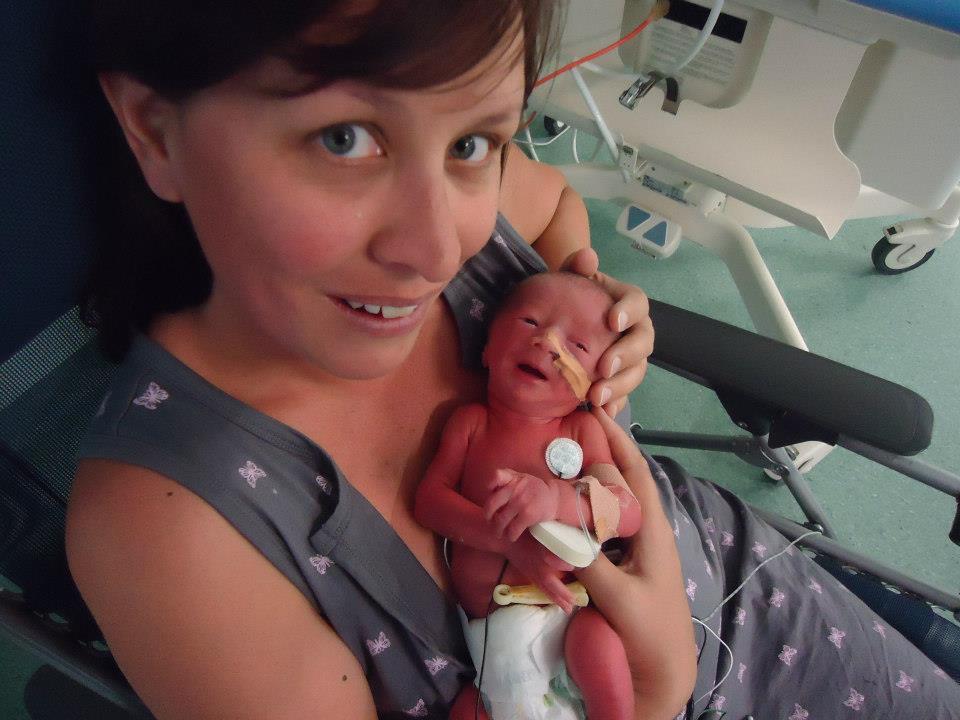Choosing to breastfeed is just the first step on an incredible journey of new learnings and discoveries for you and your baby.
Along the way, new mamas may come up against some big challenges.
Two of the most common are blocked milk ducts and mastitis says Kate Barry. A busy mama of two beautiful girls, Kate runs Little Bird Lactation from her home in New Zealand, and is an Internationally Board Certified Lactation Consultant and registered nurse. “While both conditions are very common, they aren’t inevitable. Women can breastfeed without ever having experienced a blocked milk duct or mastitis. Happily, there are ways to prevent and treat both.”
Recognising the different signs and symptoms of both conditions is a good way of avoiding and managing breastfeeding problems.
What is a blocked milk duct?
A blocked milk duct appears as a painful or tender lump* or hardening in the breast that remains after feeding when the rest of the breast has softened.
“We used to believe that a blocked duct was simply milk that got stuck and caused a blockage,” explains Kate. “Now we are learning that it's more to do with inflammation that causes the ducts to narrow.” Read more here about the anatomy of the breast and how ducts work.
Happily, some of the best ways to treat a blocked duct include simple things that new mamas can do at home, says Kate.
“Gently laying a cold flannel, or Lactamo that’s been in the freezer, on the area is recommended between feeds. Massaging the area in the shower with a heated Lactamo – about as strongly you’d stroke a baby’s face, so very gently – can also help. Treating the inflammation with ibuprofen, maintaining regular feeds, not increasing or decreasing frequency of feedings or pumping, and lots of rest for mama, can all help.”
Read more about blocked milk ducts here.
If left untreated a blocked duct can lead to mastitis.
What is mastitis?
Mastitis is an inflammation of the breast tissue and, sit impacts around one in five breastfeeding women in Australia in the first six months after giving birth. It can result in painful lumps in the breast, flu-like symptoms, and worst of all, can make breastfeeding mamas feel awful.
There are two different types of mastitis – inflammatory and infective, with the latter responding to antibiotics. Read more here about mastitis.
Common signs and symptoms of mastitis include:
- redness on the breast
- a painful, hard lump or area on the breast
- flu-like symptoms, such as high fever, chills, headaches, and joint pain.
Symptoms of mastitis can occur suddenly and worsen quickly so it’s important to seek help from your GP or medical professional as soon as possible.
“I would treat suspected mastitis the same way as I would a blocked duct,” says Kate. “The big difference is usually how you feel. While a blocked duct is painful at the area, there are few other symptoms. With mastitis, the high fever and fluey symptoms can make you feel very ill. “
“If fevers and flu-like symptoms do not start improving within 12-24 hours, seek medical help immediately.”
If left untreated mastitis can lead to abscesses in the breast which may be serious and could have implications for future feeding.
The dos and don’ts of blocked milk ducts and mastitis
It’s easy to feel overwhelmed as a new mama, but there are ways to feel more prepared when things don’t go as planned.
Kate points out that while common, neither blocked milk ducts or mastitis are an inevitable part of breastfeeding. If either happens to you, as well as treating symptoms, it’s important to try and be proactive to avoid it happening again, and look at what might have caused the issues in the first place.
“Often when women return to work, they aren’t able to feed or pump as often or as regularly, or they may be wearing tighter fitting clothes. When baby’s sleep patterns suddenly change, or something interrupts the regularity of feeding, the body can take a while to adjust. These scenarios (and others) have implications for blocked ducts and mastitis. It’s good to be aware of these factors to try to prevent the conditions in the future.”
One of the harder, but more crucial parts of treating either condition is to keep feeding, says Kate.
“While it’s important not to increase how often you pump in an attempt to drain the blockage, which can cause over-supply and other issues, we need to keep the milk moving, which means maintaining regular feeds. This can be painful, which isn’t easy.” If needed, consider ibuprofen but always check with your healthcare professional first.”
Most importantly, says Kate, is to seek the right help and support from the experts if symptoms persist or return.
“If you are getting blocked ducts or mastitis frequently, see a lactation consultant who can help discover the cause and help prevent further issues.”
*Note: while lumps in breast tissue may commonly occur as part of breastfeeding, not all breast lumps are breastfeeding related. This blog provides general information and is not intended as a substitute for medical advice, diagnosis or treatment. If your symptoms persist or worsen, or if you are in doubt, always consult your healthcare professional.
Where can I find support and help with breastfeeding?
Lactation Consultants of Australia and New Zealand can help you find a lactation consultant near you.
Ask your GP, midwife, obstetrician, or healthcare provider to connect you with a lactation consultant locally.
The Australian Breastfeeding Association have many resources available including a 24-hour helpline for new mamas, face-to-face workshops, and online classes.
Click the links below to read more on the topics







